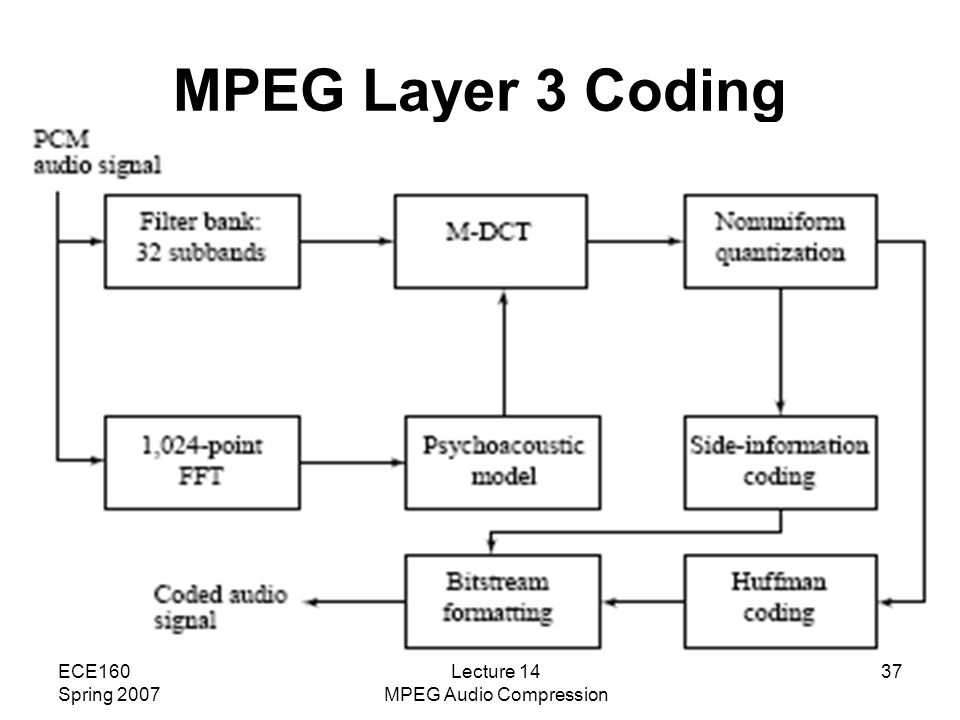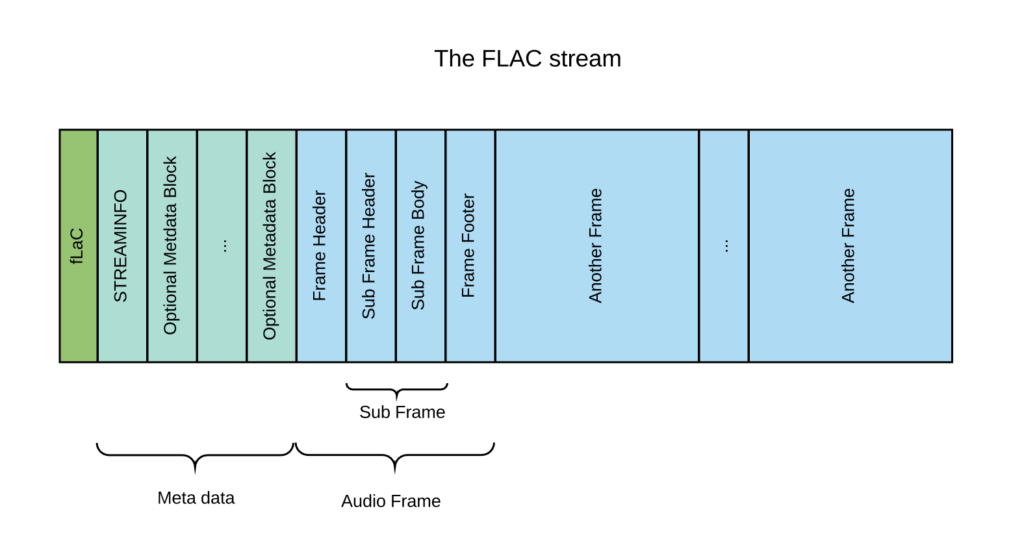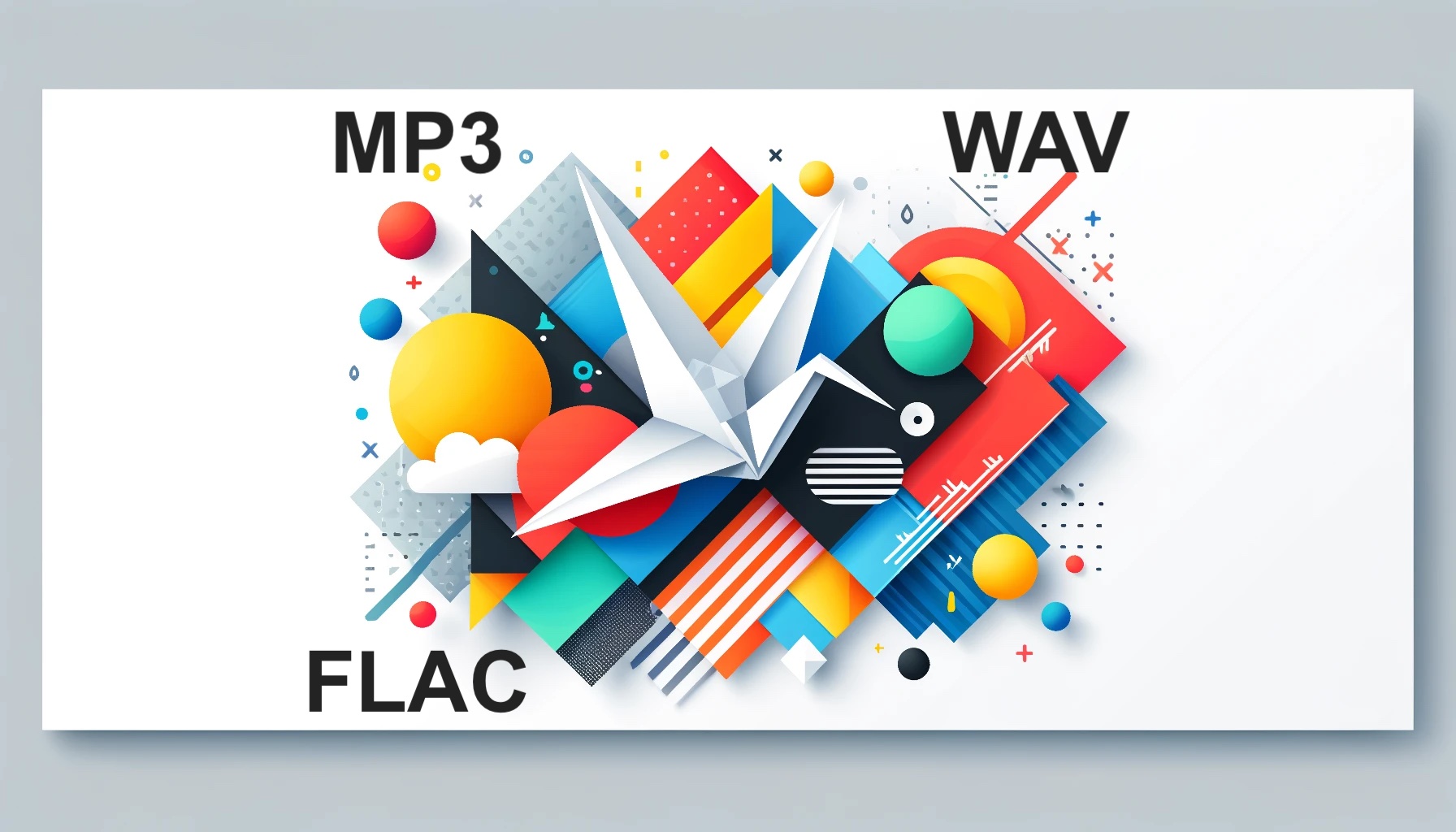The world of digital audio revolves around various file formats, each uniquely designed to accommodate different needs ranging from file size optimization to maintaining the highest sound fidelity. Among these, MP3, WAV, and FLAC stand as the most popular, distinguished by their data structures and encoding techniques.
MP3: MPEG Audio Layer III
The MP3 format, standardized by the MPEG group, is predominantly known for its use in digital media players and online streaming. It employs a lossy compression algorithm, which significantly reduces file sizes by removing audio data deemed inaudible by psychoacoustic models.

MP3 files encapsulate data in frames, each consisting of a header and a data block. The header, crucial for decoding, contains information such as the bitrate, sample rate, channel mode, and a synchronization word that identifies the start of a valid frame. The data block holds the actual compressed audio information, encoded using a technique called Modified Discrete Cosine Transform (MDCT) combined with Huffman coding for further compression.
MP3’s ability to offer a balance between file size and audio quality has rendered it a ubiquitous format despite the trade-offs in fidelity.
WAV: Waveform Audio File Format
Developed by IBM and Microsoft, the WAV format serves as a container for raw, uncompressed audio in linear pulse code modulation (LPCM) format. Unlike MP3, WAV files provide high-quality audio at the cost of larger file sizes, making them a favorite in professional settings like music production and audio engineering.
The structure of a WAV file is straightforward, beginning with a “RIFF” chunk descriptor that specifies the file as a WAV format. Following this are format descriptors such as “fmt ” that detail the audio’s encoding parameters—sample rate, number of channels, bit depth—and the “data” chunk containing the actual sound data.

Each sample in a WAV file is stored sequentially, with no compression applied, ensuring pristine audio reproduction at the expense of increased storage requirements.
FLAC: Free Lossless Audio Codec
FLAC stands as a pivotal format within the realm of lossless audio compression. Unlike MP3, FLAC compresses without any loss of quality, preserving original sound data perfectly while still reducing file sizes significantly compared to WAV.
The architecture of a FLAC file is composed of the “fLaC” marker at the beginning, followed by several metadata blocks that carry information about the stream like sample rate, channel layout, and bits per sample, and the audio frames that contain the encoded audio data.

Each frame starts with a header that guides the decoding process and is followed by one or more subframes that hold the audio information for each channel, using techniques such as linear prediction and residual coding with a Rice parameter.
This complex encoding scheme allows FLAC to maintain complete audio integrity while achieving compression ratios that make it more manageable than WAV files in terms of storage and bandwidth.
Summary
The integration of diverse audio file formats into the digital domain reflects the varying demands of users and industries, from casual listeners to audio professionals. Each format’s design and structure cater to specific scenarios, whether it’s the efficient transmission of sound over limited bandwidths or the meticulous preservation of studio-quality recordings.
Understanding the technical foundations behind these formats not only enriches one’s appreciation of digital audio technology but also informs better choices in terms of application and usage within the vast landscape of sound handling and distribution.
Udio Cloud Platform, adeptly accommodates the needs of a diverse user base by supporting all the popular audio file formats—MP3, WAV, and FLAC.
This versatility ensures that users can upload, store, and manage their audio files without worrying about compatibility issues. Whether you’re streaming low-bitrate MP3s to save on bandwidth or archiving high-fidelity FLAC recordings for professional purposes, Udio’s robust architecture offers seamless handling and playback of your audio files.
The platform leverages advanced cloud storage technologies, providing users with accessible, secure, and scalable solutions for their audio needs. With Udio, audio professionals, enthusiasts, and casual listeners alike can enjoy a centralized, efficient, and flexible audio management system that enhances their experience and productivity.
Dive into Udio’s world where every sound matters, and discover the optimal way to store, manage, and share your audio in today’s digital age.
Read related articles:

